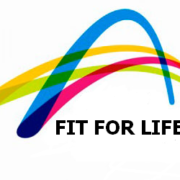When it comes to cardiovascular fitness and muscle strength, the adage is true: Use it or lose it. While regular exercise can improve heart health and increase strength and mobility, taking weeks or months off can reverse many of those benefits.
That’s not to say that rest days are not important. In general, short breaks can help you physically and mentally recharge, but whenever possible, you should avoid extending your time off for too long so that hopping back on the wagon doesn’t feel too daunting or miserable.
“Your body adapts to the stimulus you provide,” said Dr. Kevin Stone, an orthopedic surgeon and the author of the book “Play Forever: How to Recover From Injury and Thrive.” “Your muscles become used to the stress and the testosterone, the adrenaline and endorphins — all the wonderful things that circulate from exercise. When you take that away, the body initiates a muscle loss program.”
What does it mean to lose fitness
To understand the phenomenon of fitness loss, it is helpful to think about how activity and, therefore, inactivity, affects your cardiovascular system and muscle strength. Because regular exercise helps your body to deliver oxygen and nutrients to tissues in a more efficient way, one of the first things that declines when you become inactive is your cardiovascular endurance, said Edward Coyle, a professor of kinesiology and health education at the University of Texas at Austin.
After just a few days of inactivity, the volume of blood plasma circulating in your body decreases, Dr. Coyle said, leading to a series of other cardiovascular changes. After 12 days, studies show that the total amount of blood the heart pumps every minute decreases, along with the amount of oxygenated blood available to muscles and other cells — measured as the VO2 max.
If you return to the gym at this point, you will only notice slight differences in performance, Dr. Coyle said. Your heart rate may be a little faster and your breathing may be heavier as your body works harder to pump blood and oxygen to where they’re needed.
Scientists have found that it is around the three-week mark that people experience the biggest changes in their ability to get through a workout, as energy produced by mitochondria for muscle cells drops off significantly. “That means that exercise will be more fatiguing,” Dr. Coyle said.
Strength declines less rapidly than cardiovascular health. After eight weeks, inactivity finally starts to affect the size and strength of your muscles. For weight lifting or strength workouts, the maximum amount you are able to lift decreases, as does the number of repetitions you could manage, Dr. Coyle said. You are also more likely to experience muscle soreness a day or two after working out.
The extent to which different people experience a decline in fitness depends on age, genetics, lifestyle, diet and prior level of fitness. Studies show that older adults lose fitness at nearly twice the rate of 20- to 30-year-olds. And while people who work out consistently for months or years may experience fitness loss at the same rate as recreational exercisers and weekend warriors, athletes who start out at a higher fitness level “have more to lose in absolute terms,” Dr. Coyle said.
What can you do to keep fitness loss at bay?
While the cardiovascular and muscular changes that occur after a long break may sound dramatic, the good news is that most people do not cut out all activity in the same way that participants are often instructed to do in an exercise study.
If you have to travel or stay in because of bad weather, doing something is still better than nothing, Dr. Coyle said. Swap dumbbells for body-weight exercises. Try smaller “exercise snacks” throughout the day, take the stairs as much as you can, or better yet, set a goal to do a few short high-intensity interval workouts.
“If you spend just a few minutes a day doing interval training, that’s sufficient to keep blood volume elevated and mitochondria relatively high,” Dr. Coyle said.
If you’re a competitive athlete, tapering the intensity or frequency of training right before or after a big race or game can actually be beneficial, as long as you are intentional about it. For example, many athletes plan for a two- or three-week taper in order to give their bodies time to restore their glycogen fuel tank and allow muscles to recover.
Those who need to take longer breaks can try cross training or switching to a different sport, like skating or swimming. Or perhaps focus on improving balance instead, through aerobics classes or dance to keep the same muscles active in different ways.
“Overall fitness is a combination of many factors,” Dr. Stone said. “It’s not just muscle strength and cardiovascular fitness.”
How long does it take to make a comeback?
If you haven’t been physically active in a while, don’t despair. Just like off-seasons are a regular part of any sport, working to get back in shape is possible — and easier — for regular exercisers, too.
Research shows that even though extended breaks significantly reduce fitness, most exercisers’ levels remain above those who have been sedentary their whole lives. For instance, while muscle fibers can shrink during long breaks, they don’t completely disappear and they do retain a molecular “muscle memory” that can help them bounce back months after you stop exercising. In other words, you are already set up to regain strength and endurance much faster than when you started the first time around.
“You can regain approximately one-half of your fitness in 10 to 14 days with moderately hard workouts,” Dr. Coyle said.
After this initial period of retraining, the amount of time it takes to get the rest of your fitness back to prebreak levels can vary depending on how much catching up you have to do. One study found that older adults needed less than eight weeks of retraining after a 12-week break. Other evidence suggests that competitive athletes may need to train for two to three times as long as the time they took off.
When rebuilding your fitness, start by setting a goal of working out for a certain length of time each day, without worrying about your strength or intensity, Dr. Coyle said. Once you can comfortably walk or jog for 30 minutes a day for two or three weeks, you can start increasing your pace to a run. If you want to return to lifting weights at the gym, start with a lower load and then gradually add more.
Many personal trainers recommend amping up by no more than 10 percent every week. But rather than following an arbitrary number, tweak your routine based on how your body feels.
If you cannot afford several weeks of retraining, or simply want to get back in shape faster, you can do more intense workouts or incorporate interval training to speed up the process. “The higher the intensity,” Dr. Coyle said, “the faster the rebound.”
By Knvul Sheikh, NY Times
Published Jan. 30, 2023




